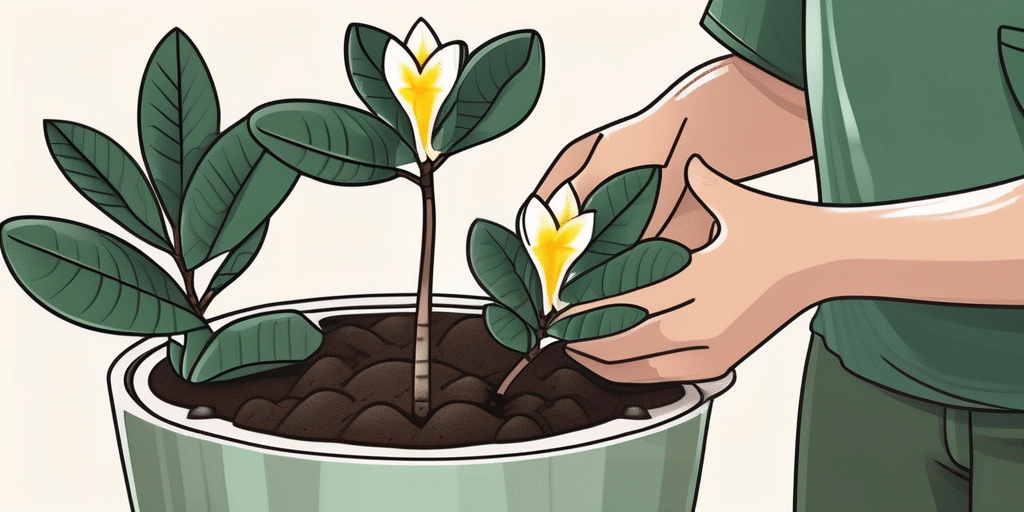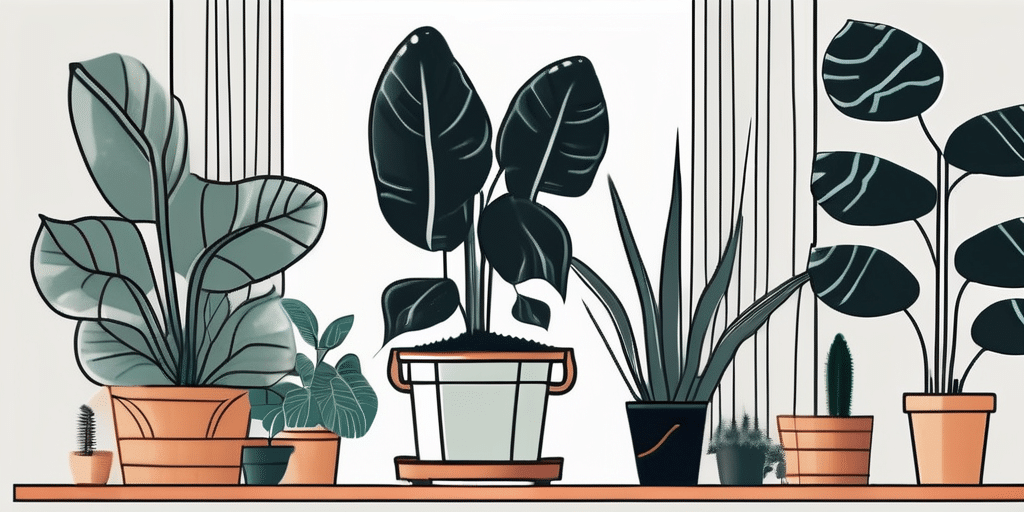If you’re a plant enthusiast looking to expand your collection, Alocasia is definitely a must-have. These tropical beauties are known for their stunning foliage and make a bold statement wherever they’re placed. In this ultimate guide, we’ll explore everything you need to know about caring for Alocasia plants, as well as the different varieties available.
Understanding Alocasia: An Overview
What is Alocasia?
Alocasia, also known as Elephant’s Ear, is a genus of around 79 species of flowering plants native to tropical and subtropical regions of Asia and Australia. These plants are loved for their large, heart-shaped leaves that can reach impressive sizes.
One of the most striking features of Alocasia plants is their unique leaf venation patterns, which vary between species and add to their overall visual appeal. These plants are not only prized for their aesthetic qualities but also for their air-purifying abilities, making them a popular choice for indoor spaces.
The Origin and History of Alocasia
Alocasia plants have a rich history rooted in the tropical regions of Southeast Asia. They were first discovered in the late 18th century by European botanists exploring the region. Since then, Alocasia has become a popular houseplant and an integral part of tropical gardens worldwide.
Throughout history, Alocasia plants have held cultural significance in various societies. In some Asian cultures, Alocasia plants are believed to bring good luck and prosperity to households, leading to their widespread use in decorative arrangements during festivals and celebrations. The versatility of Alocasia plants, both in terms of their ornamental value and symbolic meanings, has contributed to their enduring popularity across different cultures.
Different Varieties of Alocasia
Alocasia ‘Polly’
Alocasia ‘Polly’ is a compact variety that is perfect for small spaces. Its lush green leaves have a unique arrowhead shape and are adorned with striking white veins. This variety is known for its resilience and ability to adapt to different light conditions, making it a favorite among plant enthusiasts.
One interesting fact about Alocasia ‘Polly’ is that it belongs to the Araceae family, which includes other popular houseplants like Monstera and Philodendron. Its compact size makes it an ideal choice for those looking to add a touch of tropical flair to their indoor spaces without taking up too much room. Alocasia ‘Polly’ is also relatively low-maintenance, requiring moderate watering and occasional fertilization to thrive.
Alocasia ‘Zebrina’
Alocasia ‘Zebrina’ is named for its mesmerizing zebra-like stripes on its long, triangular leaves. With its dramatic appearance, this variety adds a touch of exoticism to any space. ‘Zebrina’ thrives in bright, indirect light and requires regular watering to keep its soil consistently moist.
What sets Alocasia ‘Zebrina’ apart is its unique growth pattern, with new leaves unfurling in a striking zig-zag formation. This growth habit adds an element of intrigue to this already captivating plant, making it a popular choice for plant collectors looking to expand their indoor jungle. To encourage healthy growth, consider misting ‘Zebrina’ regularly to maintain the humidity levels it prefers.
Alocasia ‘Amazonica’
Alocasia ‘Amazonica’, also known as Alocasia ‘Polly’, is a showstopper with its rich, dark green leaves and prominent white veins. Its unique leaf shape combined with its compact size makes it a popular choice for indoor gardening. Keep it in bright, indirect light and ensure that the soil remains evenly moist.
One fascinating aspect of Alocasia ‘Amazonica’ is its origins in Southeast Asia, where it thrives in the warm, humid conditions of tropical rainforests. This background explains its preference for high humidity levels and consistent moisture in its growing environment. With proper care, Alocasia ‘Amazonica’ can grow to become a stunning focal point in any indoor plant collection, showcasing its striking foliage and elegant presence.
Essential Care Tips for Alocasia
Alocasia plants, also known as elephant ear plants, are stunning additions to any indoor plant collection. Their large, glossy leaves and striking veins make them a favorite among plant enthusiasts. To ensure your Alocasia thrives and remains healthy, it’s important to pay attention to its specific care requirements.
Watering Your Alocasia
Proper watering is crucial for the health of your Alocasia. These plants prefer to be kept evenly moist, but be careful not to overwater them as it can lead to root rot. As a general rule, water your Alocasia when the top inch of soil feels dry. Use filtered water or allow tap water to sit out for 24 hours to allow chlorine to evaporate. It’s essential to water around the base of the plant to avoid getting water on the leaves, which can lead to fungal issues.
Ideal Lighting Conditions
Alocasia plants thrive in bright, indirect light. Avoid direct sunlight, as it can scorch the leaves. If you notice your plant’s leaves turning yellow, it may indicate that it’s receiving too much light. On the other hand, insufficient light can result in leggy growth and smaller leaves. Experiment with different locations to find the perfect balance. Consider rotating your Alocasia periodically to ensure all sides receive adequate light exposure.
Soil and Fertilizer Preferences
Alocasia plants prefer well-draining soil with good moisture retention. A mixture of peat moss, perlite, and potting soil provides the ideal growing medium. When it comes to fertilizing, use a balanced, water-soluble fertilizer once a month during the growing season. Follow the instructions on the packaging for the correct dosage. Remember to dilute the fertilizer to prevent burning the plant’s roots and apply it to damp soil to avoid shocking the plant.
Common Alocasia Problems and Solutions
Yellowing Leaves
If you notice your Alocasia’s leaves turning yellow, it could be a sign of overwatering or inadequate drainage. Make sure the pot has drainage holes and adjust your watering routine accordingly. Yellow leaves can also indicate nutrient deficiencies. Consider using a fertilizer specifically formulated for Alocasia plants to address this issue.
Root Rot
Root rot is a common problem that occurs when Alocasia plants are overwatered or if they’re planted in soil that doesn’t provide sufficient drainage. To prevent root rot, ensure that the soil is well-draining and only water when the top inch of soil feels dry. If you suspect root rot, remove the affected parts and repot the plant in fresh, well-draining soil.
Pests and Diseases
Like any other houseplant, Alocasia plants can fall victim to pests such as aphids, spider mites, and mealybugs. Regularly inspect your plants for signs of infestation and treat them accordingly. Neem oil can be an effective organic solution. In terms of diseases, Alocasia plants are generally resistant, but overwatering can make them susceptible to fungal diseases. Proper watering practices can help prevent these issues.
Now armed with this ultimate guide, you’re ready to dive into the world of Alocasia and elevate your plant care skills. Remember to experiment, take note of your plant’s reactions, and enjoy the journey of growing these remarkable tropical wonders.
Aside from the common problems mentioned above, Alocasia plants can also face challenges related to temperature and humidity. These tropical beauties thrive in warm and humid environments, so it’s important to provide them with the right conditions. If your Alocasia is exposed to cold drafts or low humidity levels, it may experience stunted growth or develop brown leaf edges. Consider placing a humidifier near your plant or misting its leaves regularly to create a more suitable environment.
Another factor to consider when caring for Alocasia plants is their need for adequate light. While they prefer bright, indirect light, direct sunlight can scorch their leaves. Finding the perfect balance is key. If your Alocasia is not getting enough light, its leaves may become smaller and less vibrant. On the other hand, if it’s exposed to too much light, the leaves may turn pale or develop brown spots. Observe your plant’s response to its current lighting conditions and adjust accordingly.
Join the How to Grow Everything Community
Ready to take your Alocasia care to the next level and build the garden of your dreams? Subscribe for free to How to Grow Everything and gain access to personalized gardening advice tailored to your location, grow zone, and experience level. Dive into our treasure trove of gardening articles, enjoy special offers, and receive the best gardening tips and deals right in your inbox. It’s 100% free, from our family to yours. Start your journey to a greener world today!





